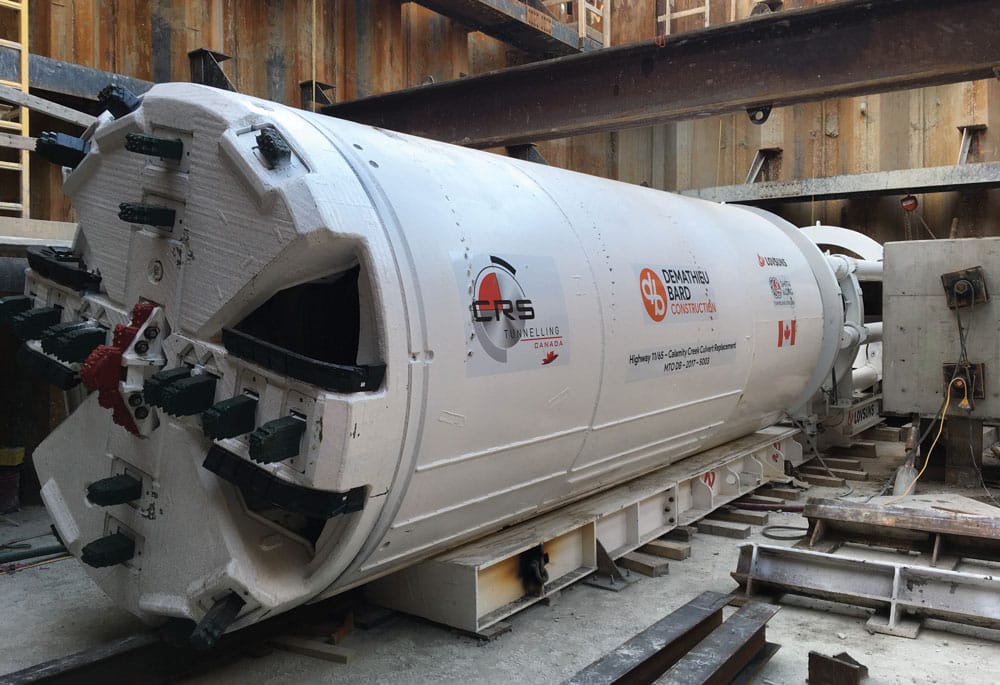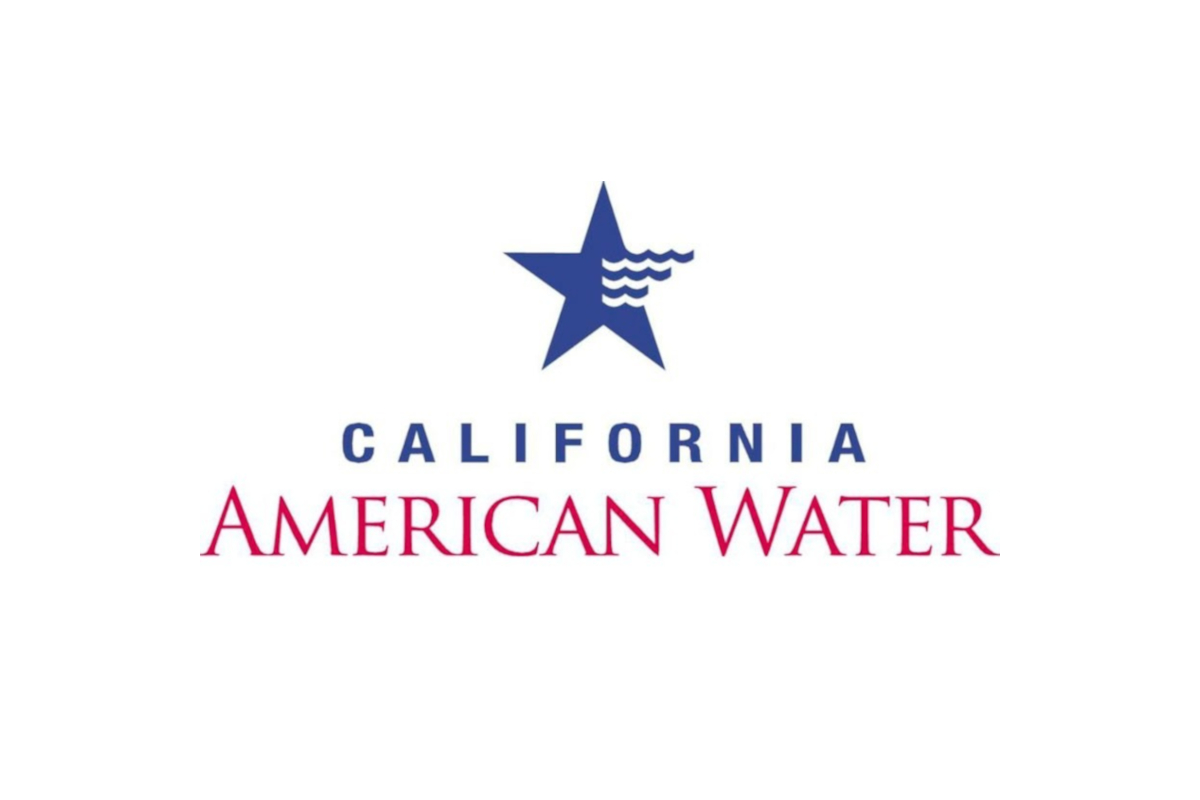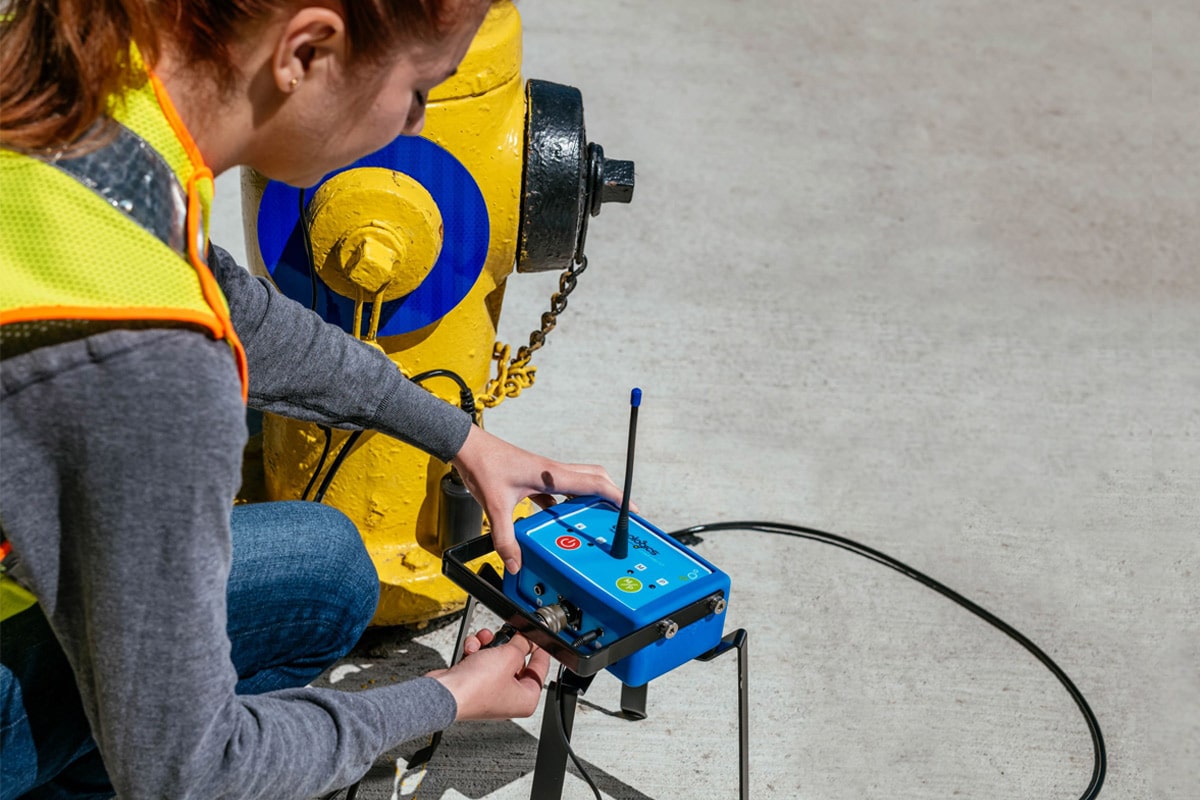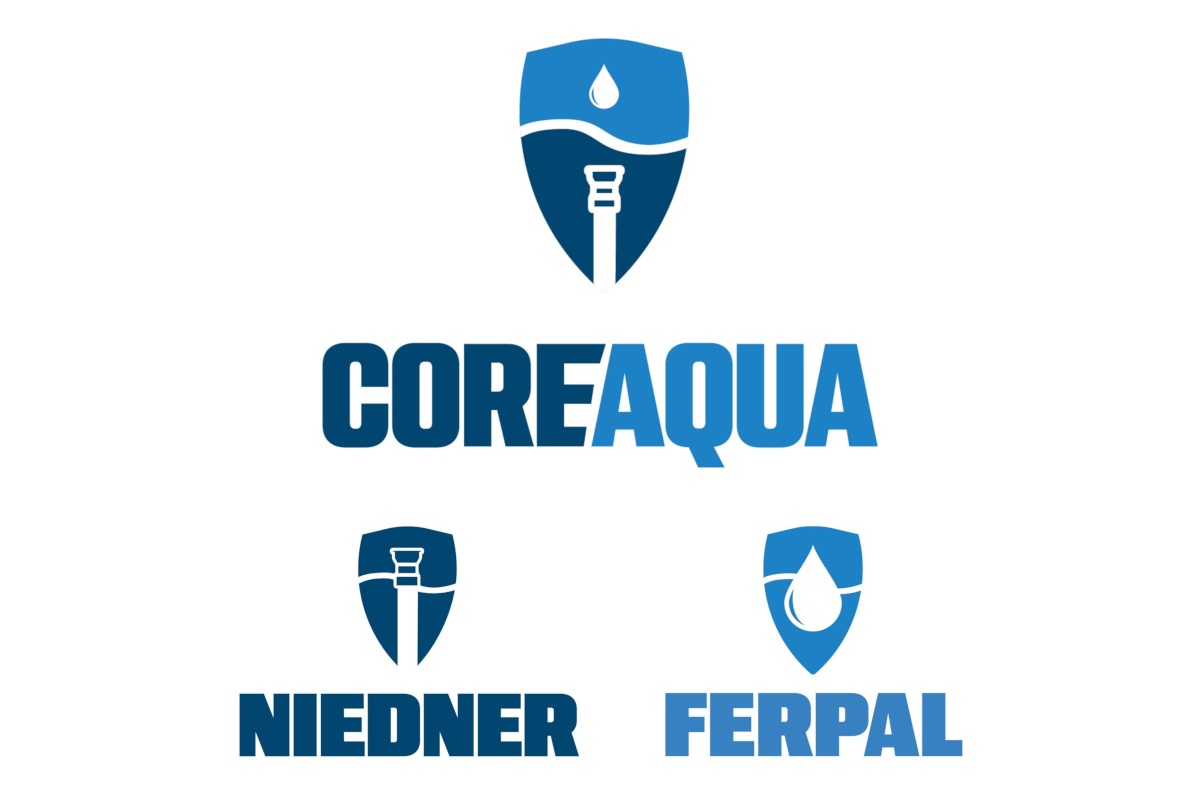
Working for the MTO – CRS Tunnelling Completes Twin Culvert Install Under Highway 11
When the Ontario Ministry of Transportation’s Northern Region was faced with a deteriorating box culvert under Highway 11, it was evident that a trenchless solution was needed to address the issue.
Highway 11, also known as the northern branch of Trans-Canada Highway in Ontario, is the major north-south highway serving Temiskaming Shores region and all Northern Ontario. A road closure and detour were not an option given the importance of this thoroughfare. Due to severe deterioration of the concrete box culvert, rehabilitation of the existing structure was also ruled out.
RELATED: Last Word – Everybody Plays a Part in Underground Damage Prevention
Tendered as a design-build project, the MTO awarded the project to prime contractor Construction Demathieu & Bard (CDB), who teamed with Harbourside Engineering Consultants for the design portion of the project and CRS Tunnelling Inc. for the trenchless construction portion of the project.
 The project involved the installation of two 150-m long, 2.1-m internal diameter reinforced concrete pipe culverts under Highway 11. Both tunnel drives were to be parallel runs spaced less than two tunnel diameters apart. The project took place in the Town of Dymond, 2.6 km north of the Highway 11 and Highway 65 junction in New Liskeard in an area known as Calamity Gulch.
The project involved the installation of two 150-m long, 2.1-m internal diameter reinforced concrete pipe culverts under Highway 11. Both tunnel drives were to be parallel runs spaced less than two tunnel diameters apart. The project took place in the Town of Dymond, 2.6 km north of the Highway 11 and Highway 65 junction in New Liskeard in an area known as Calamity Gulch.
It was determined that installation of the new reinforced concrete pipes using pressurized tunnelling would be the best installation methodology to help mitigate any potential settlement from tunnelling under the highway. CRS Tunnelling opted to use an earth pressure balance (EPB) tunneling machine for the project. The crews installed CSA – 140D microtunnel pipe manufactured by Forterra.
RELATED: Microtunnelling Provides Solution for Project under Toronto’s Pearson International Airport
According to Walter Trisi, vice president and general manager at CRS Tunnelling, the decision to use an EPB machine was made for several reasons.
Selecting the Equipment
The company had the appropriately size Lovat RME101PJ Series 19200 EPB TBM with all necessary appurtenances in its equipment roster to maintain line and grade and ensure minimal ground settlement. The TBM was equipped with face control doors and chamber access in case the crew needed to go into the cutting head chamber for maintenance or inspections. The latter would prove important as the TBM hit a major underground obstacle during the first drive.
“We had this particular machine refurbished for this project because we thought it was the best-suited to handle the geology, reduce risk by allowing us to have face access and still allow us to maintain pressurized mining operation just like slurry,” Trisi says. “We’ve used this machine on a similar-size highway crossing under a 400-series highway. The machine has a lot of horsepower, and it was well-suited for this job. Our slurry machine would have had to be skinned up to install the required pipe size for this project.
“On the back end nothing changed it was a pipe jacking operation. For spoils removal, the TBM’s screw conveyor and belt dumped into muck skips pulled by a battery-operated locomotive vs. slurry pipes, pumps, and a separation plant because of the possibility of mining in cold weather.”
Prior to work beginning, the team had to plan for the launch. Trisi notes that this was an endeavor because at the launch site — 12 m below the highway elevation — there were no reactive forces behind the main jacking station. This required the design of a site-specific thrust block anchored with rock anchors deep into the earth to withstand the jacking forces created by advancing the TBM.

Encountering Debris
Knowing there would be some work in the colder winter months, the mining operation for the first drive began in August 2019. Initial mining was three sections of pipe per day, as the TBM advance created enough room to install the machine’s gantry and supporting equipment, and the crews stopped just shy of the highway.
The next shift was planned to be longer because the crew wanted to mine the width of the highway in one day to avoid potential settlement issues. The crew mined the full width of the highway, but upon restarting the mining the next day, they hit a major obstruction just as the TBM passed the highway’s shoulder.
“Just on the other side of the highway is when the machine started to encounter wood debris,” Trisi recalls. “First, the creosote smell came and then the wood fragments started appearing in the spoils, just after the machine cleared the highway.”
RELATED: Trenchless Technology Canada Roundtable – The State of the Canadian Trenchless Market
The wood fragments, believed to be the remnants of an old foundation, were large enough that they caused the machine to come to a halt. Because of the proximity to the highway embankment, the MTO preferred to not construct a recovery shaft. Instead, the decision was made to give the machine all it had and attempt to power through the obstruction. Because of the creosote odor, Ontario’s Ministry of Labor was consulted. The recommendation was to increase ventilation and wear masks in that section of the works.
“Manny Cruz, our TBM operator, retracted the TBM’s cutterhead slightly and then gave her [everything she had] we rotated the cutter head in both directions, applied ample forward thrust, and made an aggressive maneuver to break through the obstruction and it worked,” Trisi says. “We believe it did cause us to go slightly off alignment but at the end of the day, we were able to correct and hit the exit shaft at a suitable location.”
Trisi notes that opting to use the EPB machine vs. a slurry setup proved to be the right decision especially after hitting the wood debris.
“The wood fibers could have entangled in the cutting chamber around the cone crusher, the wood could have clogged up the apertures and suction lines of the slurry system. The slurry pumps and separation system would not have like the wood fibers and debris either,” he says. “This would have caused us a lot of downtime trying to clean the system or even possibly could have cause the machine to stop and we would have had to dig a rescue pit to remove it.
Because of the approximately one-month delay caused by the obstruction and contaminated ground, the machine broke through Oct. 19, 2019. The Lovat machine was removed, cleaned, retested and back to work in less than two weeks.
Cold Weather Install
The delay caused by the obstruction prompted a change in the work schedule and more cold-weather work. The first tunnel was mined using day shift only. Averaging three pipe a day. The second tunnel was a 24-hour operation to help return to the set project schedule and to avoid freezing of the lines during winter weather.

The work took place in Northern Ontario near the Quebec border. When the cold weather rolled in, the crews were faced with -40 C temperatures.
“Toronto [where CRS Tunnelling does much of its work] is similar in winter temperature to Buffalo or Wisconsin,” Trisi says. “New Liskeard is approximately six hours north of Toronto, closer to the border of Quebec, so the temperature when we woke up would be -40 C some mornings. It’s tough to keep morale up knowing you are going out into the freezing cold.”
Trisi notes that the crew began hitting the colder weather while setting up for the second drive, he noticed that the crew’s morale — despite decreasing temperatures — picked up when work began on the second tunnel. Though the crew did hit some wood debris on the second tunnel, it was not enough to stop the machine and the tunnel was installed on-line and on-grade with the TBM breaking through on Dec. 12, 2019.
RELATED: Staying Safe in Extreme Winter Working Conditions
“All in all, the participants -MTO, CDB, Harbourside Engineering, Lea Consulting, Golder, and CRS – all worked together to ensure the success of the project,” Trisi says. “Everyone, even in trying times, came together and found solutions to the issues at hand and through perseverance, hard work and ingenuity, we as a team got the job done.”
Equipment Specs
- Refurbished Lovat RME101PJ EPB TBM
- TBM and jacking station structural and hydraulic refurbishment performed by Lovsuns Canada
- TBM electrical refurbishment by Smith & Long
- Mixed ground cuttinghead
- 250 hp main drive
- EPB excavation system with screw conveyor
- Propulsion system inside with pushing ring and lead pipe
- Articulation cylinders, stabilizer fin
- Ground conditioning systems, gas detection system, laser targets
- GEO-Laser guidance
- Single stroke (10 ft) jacking station: 800 tonne capacity
- Muck train for spoils removal
- Bentonite lubrication – Wyo-Ben
- Micro-Gel supplied by Di-Corp




